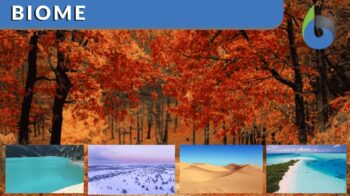
Biome
n., plural: biomes
[ˈbaɪoʊm]
Definition: A major regional biological community
Table of Contents
Biome Definition
What are biomes? There is no universal definition of biomes. But biome definition in biology of different biomes reveals the ecological truth by testing hypotheses. Biomes are the great communities of the world. They are classified according to their specific characteristics, such as the climate, vegetation, soil, and wildlife. Biomes are important. They change constantly during history since they are damaged because of, for instance, human activities. Therefore, we should continue the preservation and conservation of biomes.
Some people are confused with different ecological concepts, such as biomes and ecosystems. An ecosystem refers to a system of interactions between different living species, such as plants and animals, in a certain environment Thus, the main difference between biome and ecosystem is that the ecosystem is a part of a biome. Therefore, several ecosystems will form a biome.
Biome Characteristics
What is a biome? A biome meaning is simply a large environment generally characterized by various abiotic factors (e.g. temperature, amounts of precipitation, pH, light intensity, and so on) and biotic factors. There are many ways to classify biomes. One of them is according to climate– whether it is hot, dry, cold, rainy, or humid. Biomes are formed as a result of physical climates that consequently affects the soil, precipitation, and wildlife.
Types Of Biomes
There are 6 biomes in the world. Four of which are land biomes: forest, desert, grassland, and tundra, in addition to the two aquatic biomes: i.e. marine and freshwater. These biomes are subdivided into specific types, e.g. temperature rainforest, tropical rainforest, taiga, and savanna.
Forests are considered to be important homes for several biotic communities. They serve as a habitat and food source for various animals. As such, one may find various microhabitats within a forest. Moreover, forests serve in the climate-buffering global capacity; therefore, forest destruction may lead to great changes in the local or the global climate.
The marine and freshwater biome types represent the most important examples of biomes since water is the main constituent of all living organisms. It is a major biomolecule of life. Additionally, a great number of living species live in marine and freshwater. Oceans have a great effect on the global climate even more than forests as the earth’s surface is covered mainly by waters.
In addition to its contribution to maintaining the atmospheric temperature, the Earth’s hydrosphere (water component) contains a huge number of photosynthetic planktons that produce oxygen that supports the large population of aerobic organisms thriving in oceans, seas, and freshwater.
Read these free lessons on Freshwater Ecology Tutorial.
Even though freshwater biomes are one of the most important world biomes they suffer greatly from pollution. Overfishing, for instance, makes these biomes unstable and harms many organisms within these systems. Read this tutorial on the conservation efforts made to recover the toheroa population in New Zealand that significantly declined due to overharvesting.
Biomes are useful for ecological studies since they help in defining the ecosystem changes using the remote sensing satellite. Biomes may also give us information about the functioning of ecosystems. For example, the productivity of ecosystems, the function of plants, or climate changes.
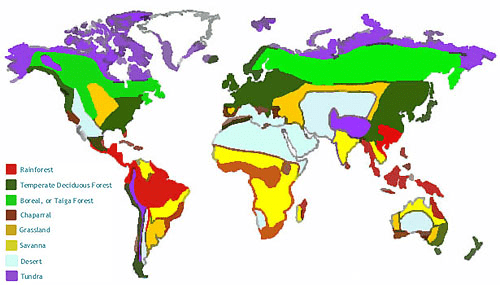
Earth biome map is constructed either using the knowledge of experts as well as the vegetation maps of different regions or using satellites. Satellites, such as A-train, are used to monitor the Earth’s meteorology, for instance, taking satellite images, and remote sensing. NASA Earth Observatory is an online repository of various satellite imagery.
Satellite-based biome maps are more accurate and objective regarding the different threshold of climate that influences the biome boundaries. The biome map of the world helps in comparing the different ecosystems in different areas around the world. The same biome in different parts of the world might contain different species and different ecological systems. This variance aids in studying the evolutionary and ecological processes in different regions.
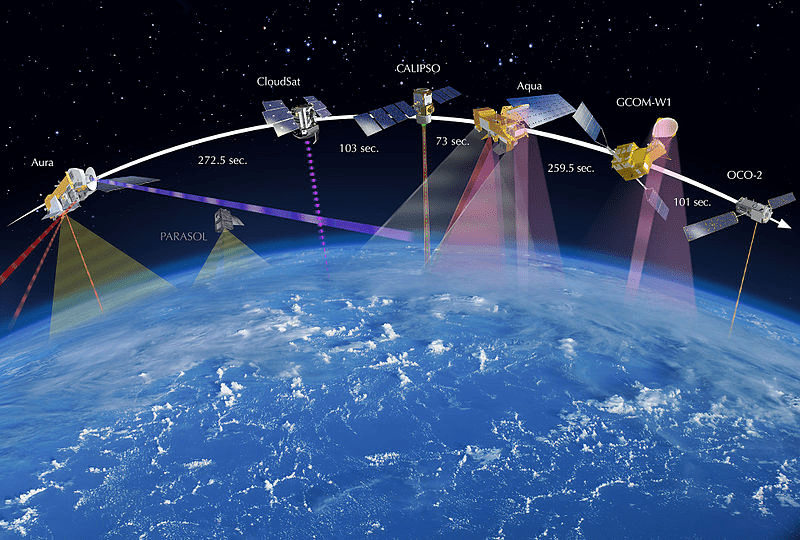
Different types of biomes found in the biomes map are shown in the following biomes list where further biome facts are shown to explain biomes meaning:
1. Forests:
Forests are covered in trees. They contain great biodiversity of species such as birds, insects, and mammals. There are three major biomes of forests, which are tropical forests, temperate forests, and boreal forests (Taiga). These forests experience different conditions of the climate since they occur in different regions. Therefore, different types of forests are classified as follows:
A. Tropical rainforests:
Tropical rainforests are more like jungles. They are close to the equator where the weather is rainy and warm all year. Several species live in tropical rainforests as well as a great number of trees that serve as shelters to many animals, and also contribute to oxygen production and maintain climate buffering capacity.
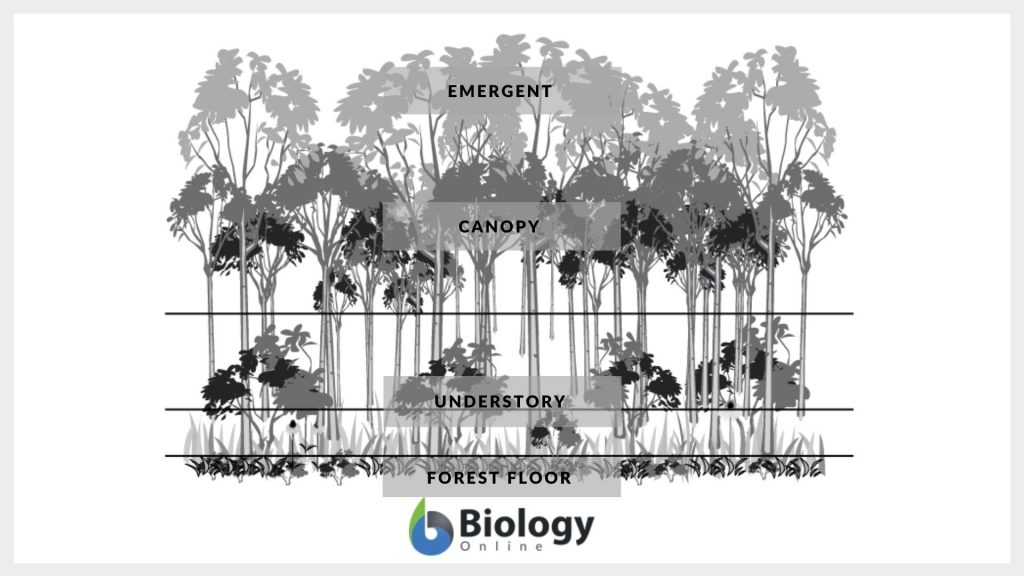

B. Temperate forest
In temperate forests, all four seasons of the year alternate throughout the year, in the fall, leaves of trees shed and fall, through winter, trees are inactive. Moreover, through the winter you can find bears, deer, and woodpeckers.
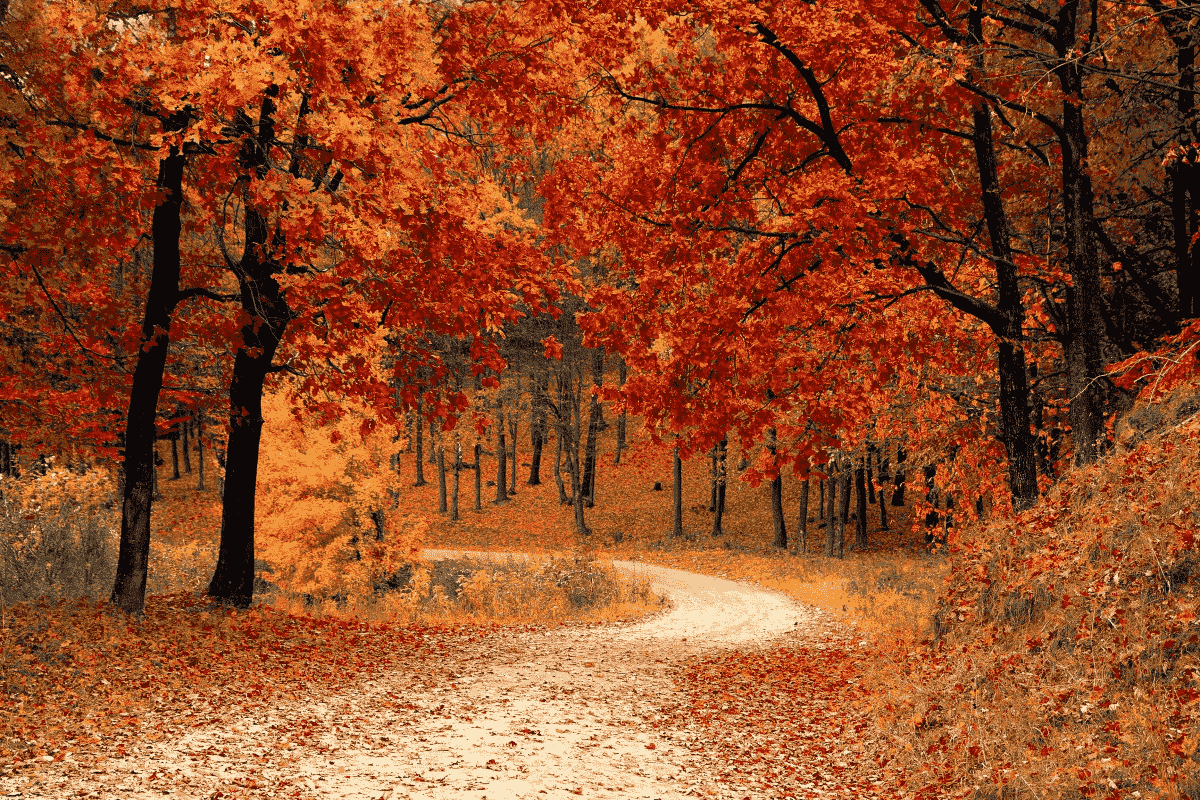
C. Boreal forest (Taiga)
This biome represents the largest terrestrial (land) biome on earth. Taiga biome is characterized by the presence of conical-shaped trees called conifers. The boreal forests have cold, dry, and long winters where most of the birds migrate and mammals hibernate. Some animals remain active and grow during winter. Therefore, they have fur or feathers to warm their bodies and thus, are capable of living in cold conditions.
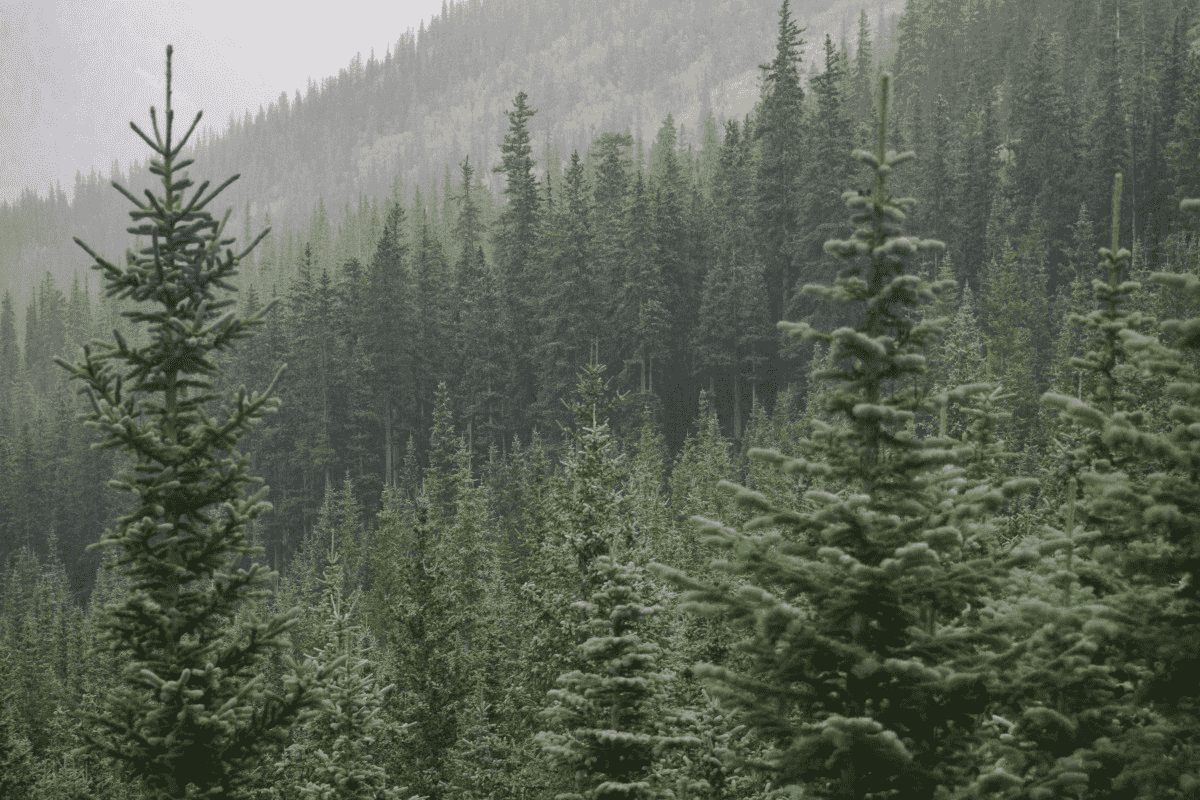
2. Deserts
Deserts represent biomes of the highest temperature of all biomes. However, they get very cold during the winter. The extreme swinging in the temperature contributes to the presence of extreme environments in the desert where several species migrate to underground shelters to live in more stable temperatures so that they can survive. Moreover, animals and plants living in desert biomes are mostly able to live for a long period without water.
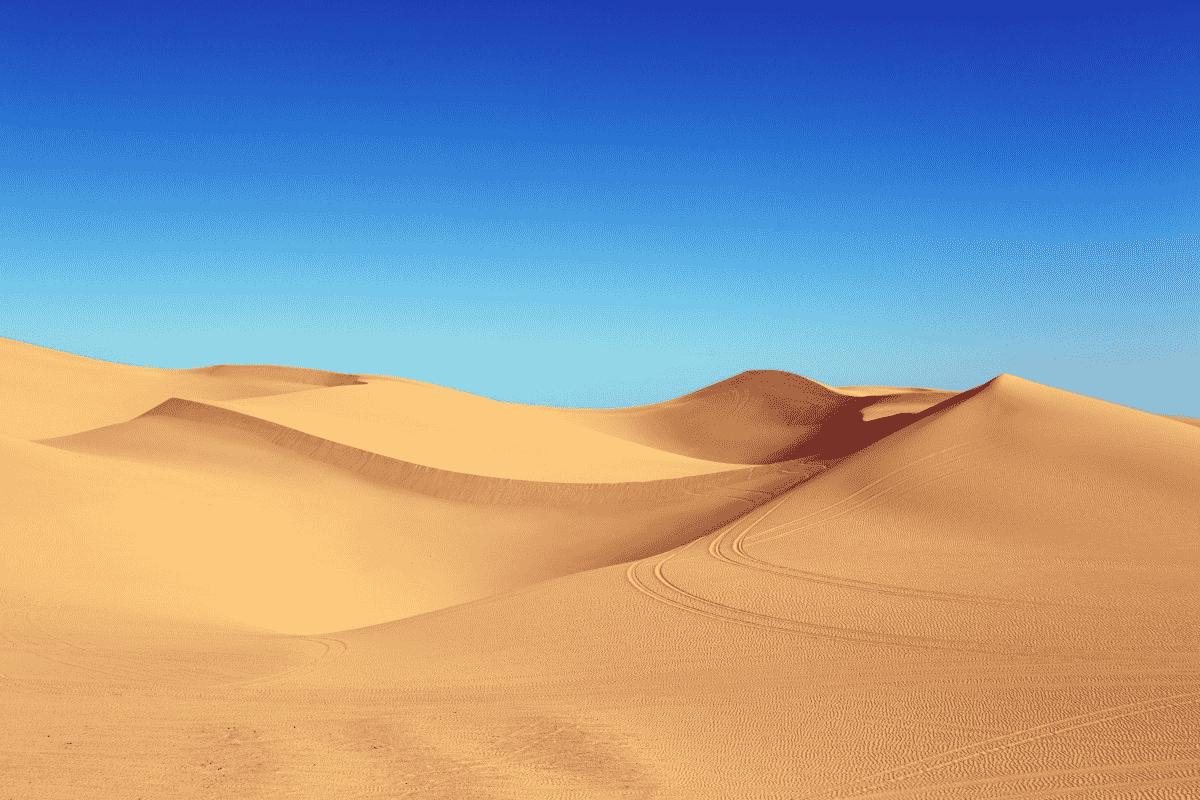
3. Tundra
Tundra biome is cold and flat, it is characterized by the lowest temperature of all biomes as well as poor nutrients in the soil, which consequently lead to the presence of short plants, such as moss, shrubs, lichens, and grasses that grow during summer since a thick ice layer is present below the soil throughout the year, which is called the permafrost. Therefore, trees cannot grow their roots into the soil because they cannot penetrate the ice layer. Birds may be found nesting in the tundra during the summer but they migrate again during the winter to other areas of higher temperature. Mammals, such as mice, live in tunnels below the snow during the winter.
Tundra biome is greatly threatened as the climate changes greatly affect it. Global warming disrupts the tundra biome, its permafrost, and species living in it.
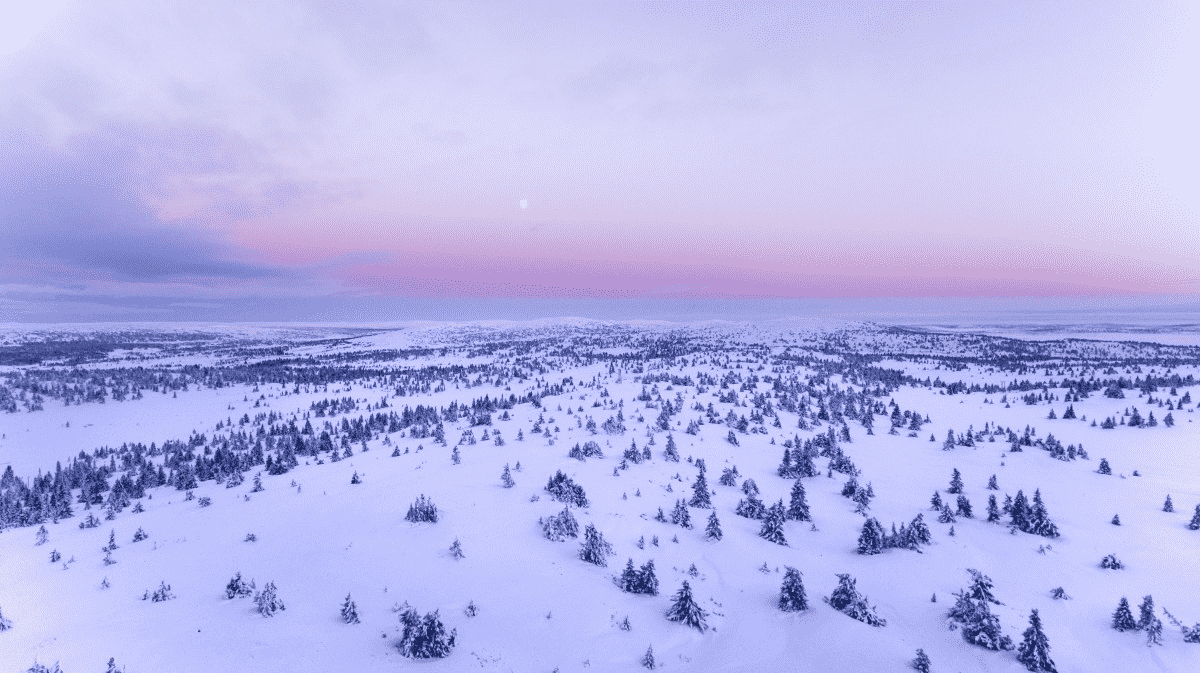
4. Grassland
Grasslands contain no trees; only short to tall grasses. These lands do not get adequate rain to grow trees since the weather is usually dry and warm. However, they get the rain that is enough to grow some herbs, flowers, and grasses. Large mammals that travel in herds are often found in grasslands.
There are two types of grasslands: (1) temperate grasslands and (2) savannah (tropical grasslands), The savanna is often found near the equator. They receive seasonal rainfalls; therefore, trees usually grow singly or in groups throughout the biome. Animals with long legs usually live there. They are seen in herds and can escape predators, e.g. by running.
Humans have greatly affected the grassland biome. In the United States, most of the grasslands having rich soil have been used for grazing cattle or agriculture. Different species were affected, from the small animals like s the monarch butterfly to the various large animals such as elephants. Losing large animals, e.g. by excessive hunting, will disturb the ecological balance of an ecosystem. For instance, losing grasses will eventually lead to the loss of grazing animals such as zebras, which are a food source of predators or carnivores in the area.

5. Freshwater
Freshwater contains low salt concentration, i.e. is about less than one percent. Freshwater biomes include rivers, streams, lakes, and ponds. Read this Freshwater Ecology tutorial to learn how living things in freshwater ecosystems adapt to their environment.
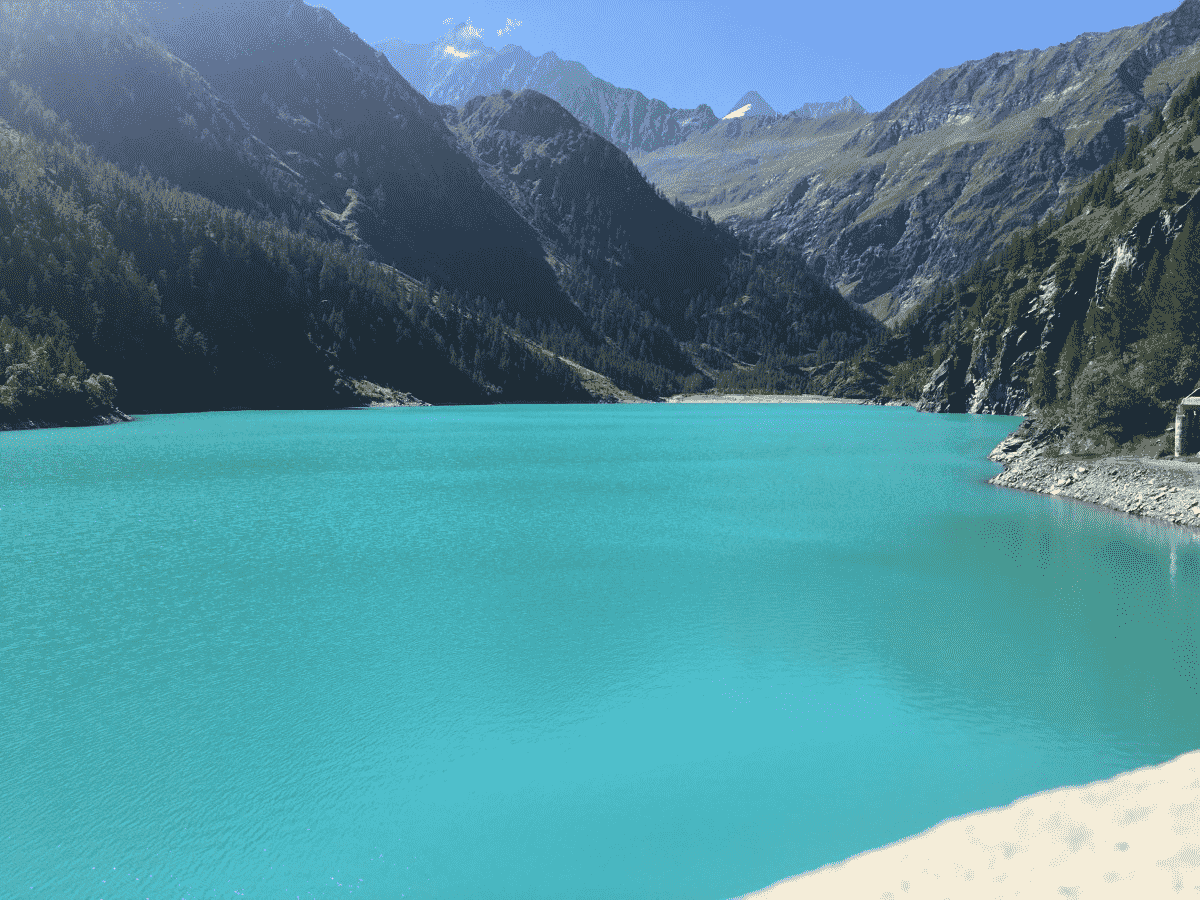
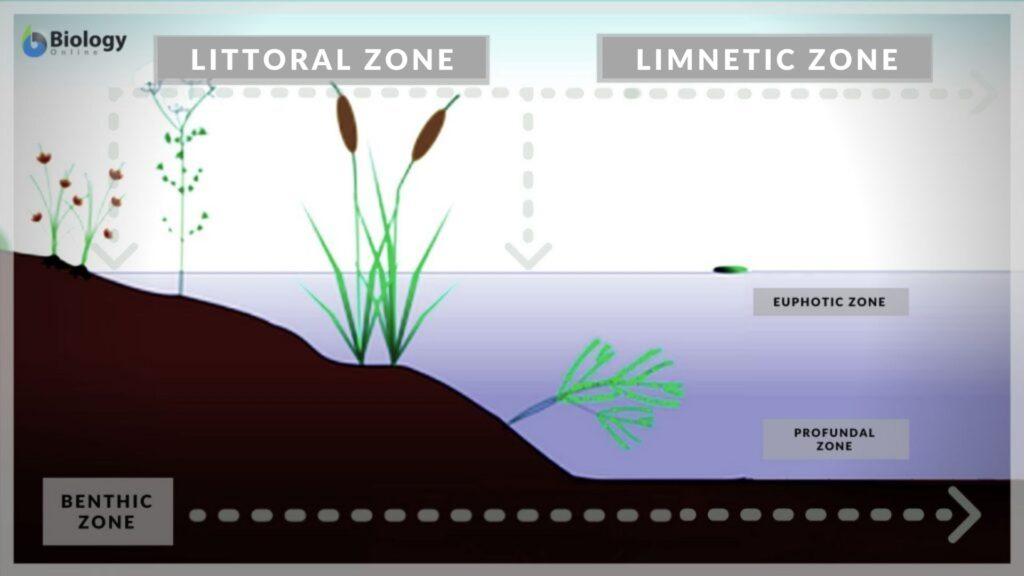
6. Marine
The marine biome is the largest biome in the world, it covers almost 70% of the world. It includes five major oceans of the world: the Arctic Ocean, Southern Ocean, Indian Ocean, Atlantic Ocean, and the Pacific Ocean. Marine water has high concentrations of salt, therefore, plants and animals in marine waters adapt to high concentrations of salt by getting rid of excess salt or by increasing the uptake of water (homeostasis).
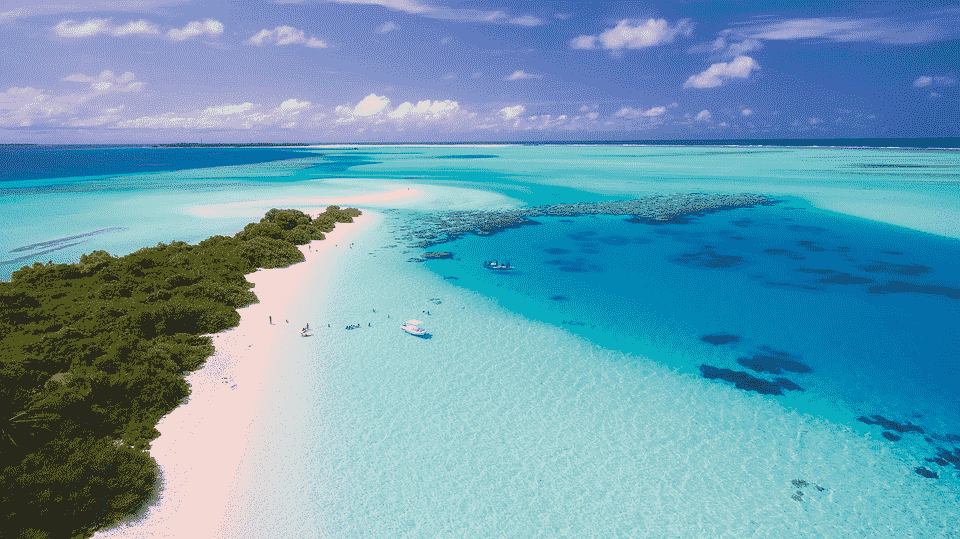
Biomes may be classified into:
- Terrestrial biomes or land biomes – e.g. tundra, taiga, grasslands, savannas, deserts, tropical forests, etc.
- Freshwater biomes – e.g. large lakes, polar freshwaters, tropical coastal rivers, river deltas, etc.
- Marine biomes – e.g. continental shelf, tropical coral, kelp forest, benthic zone, pelagic zone, etc.
Biome Examples
Forests cover about one-third of the earth. They are distributed in various geological regions. One example is the temperate forests found in Eurasia and eastern North America. Several species are found in temperate forests, including squirrels, deer, and bears. Another type of forests are the tropical forests They are found near the equator in regions such as Central America, Southeast Asia, and sub-Saharan regions. Examples of animals thriving in tropical forests are large birds and harpy eagles. The taiga (Boreal forests) are found across Canada, Alaska, Scandinavia, and Siberia. Deer, moose, and large herbivores are found in Boreal forests.
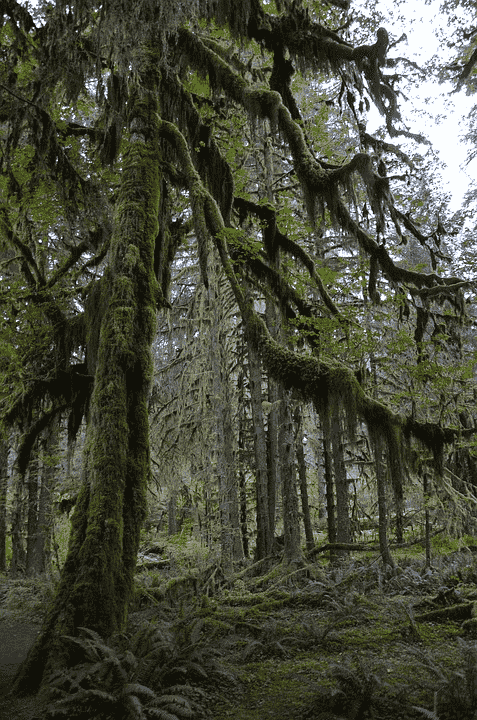
Deserts cover about 20% of the earth (one fifth) divided into four categories depending on their climate or location which are: hot, cold, coastal, and semiarid. The Sahara desert covers most of the continent of Africa. It is a known arid desert. Another desert biome is found in the southwest of the United States, the Moava desert. Some areas of North America, Asia, Greenland, and Europe are covered with semiarid deserts, an example of coastal desert in South America is the Atacama desert of Chi, additionally, a famous cold desert is the Antarctic.
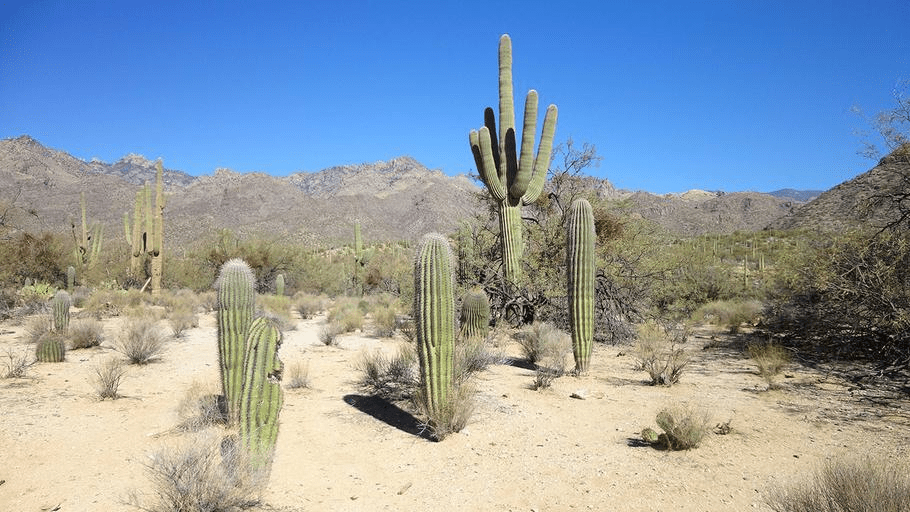
There are two types of tundra and both are found over high-latitude lands: (1) the alpine and (2) the arctic tundra. The alpine tundra is found over very high mountains where the temperature falls overnight. The arctic tundra is found in the north of boreal forests on high landmasses in Russia, Iceland, Canada, Greenland, Scandinavia, and Alaska.
Animals in tundra build layers of fat to keep their temperature during winter. They are covered in fur to insulate them. Tundra animals include small mammals, such as ground squirrels and large mammals (e.g. caribou). Tundra carnivores such as snowy owls, polar bears, arctic foxes, and wolves are on the top of the tundra food chain. They mostly develop white feathers or fur for camouflage in snow during winter.
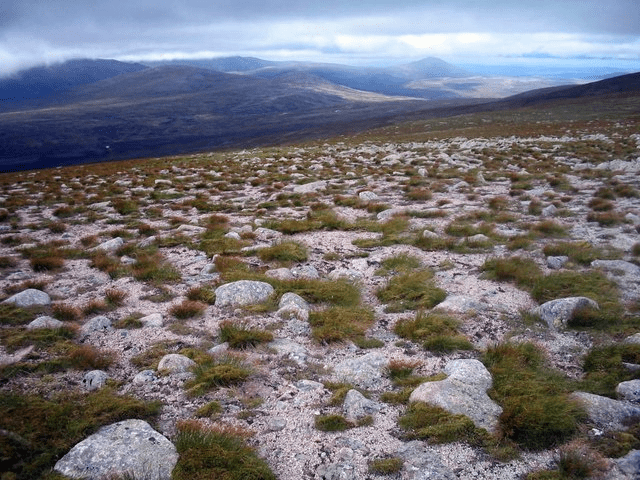
Savannas cover most of the continent of Africa, some areas of India, Asia, Australia, and South America. Temperate grasslands are found away from the equator covering areas in Argentine, Eastern Europe, North America, and Russia. Temperate grasslands have no shrubs or trees. Savanna and temperate grasslands may seem similar but actually, they are different regarding several aspects. For example, elephants are not found in the United States temperate grasslands but they are found in the Savannas of Africa. In contrast, prairie dogs are usually found in temperate grasslands.
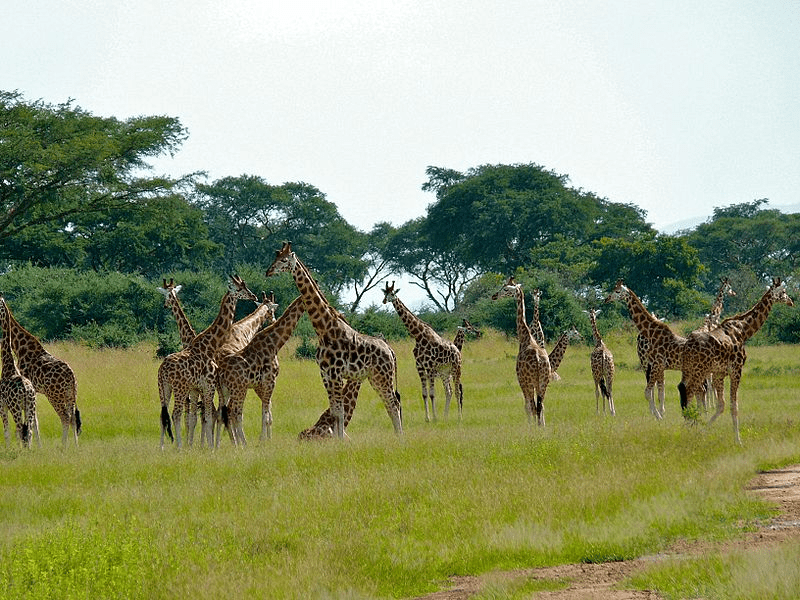
Freshwater and marine biomes cover about 75% of the Earth. Rainwater or melting glaciers are the main sources of freshwater running rivers and streams. They usually empty in an ocean or a lake whereas lakes and ponds represent the stationary forms of freshwater. Oceans are saltwater bodies that span around most of the surface of the earth, Various living species live in marine biomes, in deep oceans, there is insufficient light to support photosynthesis, however, many creatures undergo chemosynthesis to survive. Coral reefs are formed in shallow oceans, they are made up of calcium carbonate. Climate changes can affect coral reefs greatly since oceans become more acidic and hotter.

You are probably wondering what biome do we live in. Here is a simple example, if you are living in California then biomes in California are: temperate forests in Redwood forests in northern California and grassland in Western North America in mountains rose. Moreover, the desert biome is found in several regions.
In order to explore different biomes in regions all over the world, 3d biome models were developed to provide a virtual look at any biome mentioned in the list of biomes using a computer, tablet, or phone.
Try to answer the quiz below to check what you have learned so far about biome.
References
- Biomes CA. (n.d.). Retrieved December 11, 2020, from https://livingforapes.weebly.com/biomes-ca.html
- Kazilek. (2013, July 19). Boundless Biomes. Retrieved December 5, 2020, from https://askabiologist.asu.edu/explore/biomes
- National Geographic Society. (2012, October 09). Ecosystem. Retrieved December 5, 2020, from https://www.nationalgeographic.org/encyclopedia/ecosystem/
- National Geographic Society. (2019, September 07). Biomes, Ecosystems, and Habitats. Retrieved December 5, 2020, from https://www.nationalgeographic.org/media/biomes-ecosystems-and-habitats/
- National Geographic Society. (2020, February 05). Aquatic Biome. Retrieved December 5, 2020, from https://www.nationalgeographic.org/encyclopedia/aquatic-biome/
- National Geographic Society. (2020, February 05). Desert Biome. Retrieved December 5, 2020, from https://www.nationalgeographic.org/encyclopedia/desert-biome/
- National Geographic Society. (2020, February 05). Forest Biome. Retrieved December 5, 2020, from https://www.nationalgeographic.org/encyclopedia/forest-biome/
- National Geographic Society. (2020, February 05). Grassland Biome. Retrieved December 5, 2020, from https://www.nationalgeographic.org/encyclopedia/grassland-biome/
- National Geographic Society. (2020, February 05). Tundra Biome. Retrieved December 5, 2020, from https://www.nationalgeographic.org/encyclopedia/tundra-biome/
- National Geographic Society. (2020, September 01). Biome. Retrieved December 5, 2020, from https://www.nationalgeographic.org/encyclopedia/biome/
- National Geographic Society. (2020, September 01). Biome. Retrieved December 5, 2020, from https://www.nationalgeographic.org/encyclopedia/biome/
- University of California Museum of Paleontology. (n.d.). Retrieved December 5, 2020, from https://ucmp.berkeley.edu/exhibits/biomes/index.php
©BiologyOnline.com. Content provided and moderated by BiologyOnline Editors.


